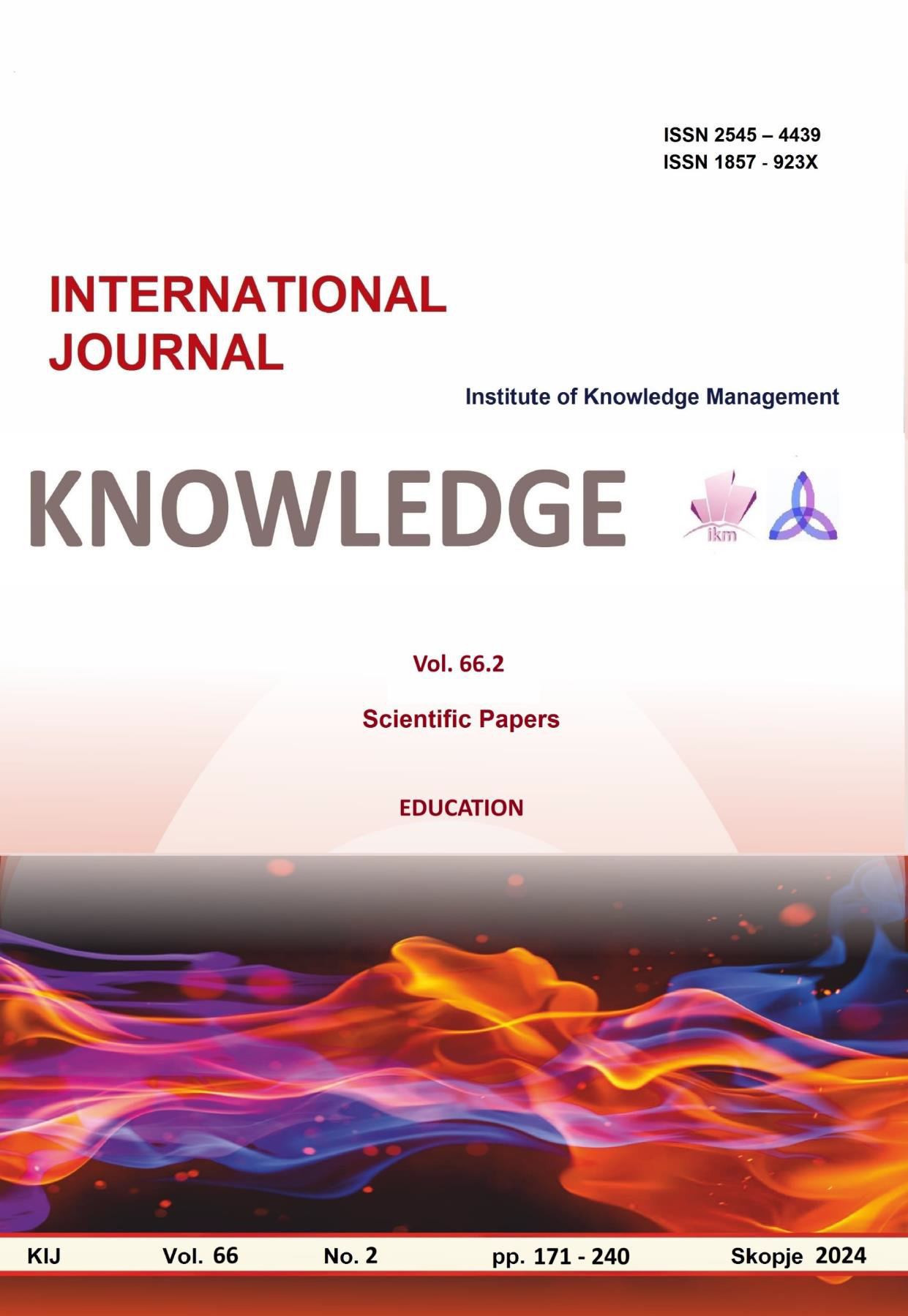MODEL “LOOSE” OR PROJECT FOR DIFFERENTIATION OF LEARNING PATHWAYS IN VOCATIONAL EDUCATION WITH PRACTICAL EXAMPLE
Keywords:
weak students, parallel curriculum, various educational pathwaysAbstract
The article offers a model of a parallel curriculum but with a lower qualification level, in the same major, suitable for poorly motivated and performing students. Differentiated instructional design models have tremendous potential to improve vocational education for disadvantaged students by recognizing their diverse needs, providing targeted counseling, support, and using technology to create more inclusive and successful learning environments. By studying a predetermined and enumerable and listed set of activities and given skills, students with reduced motivation can be relieved of one part of their professional training, but at the expense of covering criteria for a certain professional qualification as a whole part of their education,but instead in a parallel curriculum in the same specialty with a lower professional qualification than that of the five-year course. Positive putative and expected effects of the LOOSE model are: motivating the students themselves, especially those from the problem groups to graduate and have a profession in their hands, seeing that their studies are difficult to complete the secondary program; unloading the second level of secondary education from weak students who, after the 10th grade, are a huge problem for school discipline, when no motivated at school; separation of unmotivated and weak students has socially significant results, it improves the situation in the class and returns normality, and gives a chance for targeted completion of part of the profession to students who do not wish to continue in the field of higher education; in the production part of the training (which is the module phase of their professional education of these groups) and production output - the work of the students - can be sold or bought by the Ministry of Education and Culture and distributed to other schools, thus realizing savings and having a financial effect; fast VET curriculum with different graduation pathway levels in conformity with NQF enabling the realization of creating a qualification at learners’ own pace from learning outcomes acquired in formal, non-formal and informal contexts. The model of the plan LOOSE offers a framework for making learners more mobile and qualifications more adaptable, laying down principles and technical specifications and making use of existing national legislation and regulations with slight, not a grandiose and far-fetched risky action-plan and changes. The project can be applied both to one school and jointly to two schools or more, there you can open a production training workshop and in optics, measuring/precision technology(as the example in the article), etc. and develop a type of permitted commercial activity (it could be also applied as innovation), or this production can be bought centrally from the state Ministry of Education and Culture (or create a stand/store - "Students made it", which would be an attractive commercial niche in the market especcialy for distibution in the other schools.
References
Adams, R., & Miller, B. (2014). The Impact of Socioeconomic Status on Student Achievement . Journal of Educational Equity and Leadership.
https://searchworks.stanford.edu/view/462358
Anderson, R., & Garcia , L. (2019). Family Factors and Academic Performance: A Meta-Analysis. Review of Educational Research. https://journals.sagepub.com/home/RER
Cross, T. L., & Olszewski-Kubilius, P. (eds) (2021). Conceptual frameworks for giftedness and talent development: Enduring theories and comprehensive models in gifted education. New York, NY: Routledge. Goggle Scholar.
Baccassino, F., & Pinnelli, S. (2023). Giftedness and gifted education: A systematic literature review. Frontier in Education, 7, 1073007. doi: 10.3389/feduc.2022.1073007. https://www.frontiersin.org/journals/education/articles/10.3389/feduc.2022.1073007/full#B125
Baum, S.M., Renzulli, J.S., & Hébert, T.P. (1995). Reversing underachievement: Creative productivity as a systematic intervention. Gifted Child Quarterly, 39, 224–235.
Gardner, H. (1999). Intelligence reframed: Multiple intelligences for the 21st Century. New York: Basic Books.
Disterveg, F.A. (1971). Izbrani pedagogicheski proizvedeniya.: V 2t ., Sofia: Nar.prosveta . [Trans: In Bulgarian]
Dimitrov, L. (2002). Razvitie i realizatsia na detsata prez XXI vek. Pedagogy , 02 (4). 3-6 p.m. [Trans: In Bulgarian]
Doe, J., & Smith, J. (2014). Academic Achievement and Its Predictors in Elementary School Students. Journal of Educational Psychology. ISSN: 0022-0663, https://www.apa.org/pubs/journals/edu
Johnson, E., & Brown, M. (2018). Factors Influencing Academic Performance in High School Students" Educational Research Review. https://www.sciencedirect.com/journal/educational-research-review Williams, S., Martinez, D., 2017. The Role of Executive Functions in Academic Achievement. Child Development Perspectives. 2 - 11.
Montgomery, D. (2015). Teaching gifted children with special educational needs: Supporting dual and multiple exceptionality. New York, NY: Routledge
Stanley, T. (2021). When smart kids underachieve in school: Practical solutions for teachers. New York, NY: Routledge.
Trail, B.A. (2021). Twice-exceptional gifted children: Understanding, teaching, and counseling gifted students. New York, NY: Routledge.
VanTassel-Baska, J., & Little, C. A. (eds) (2021). Content-based curriculum for high-ability learners. New York, NY: Routledge.





